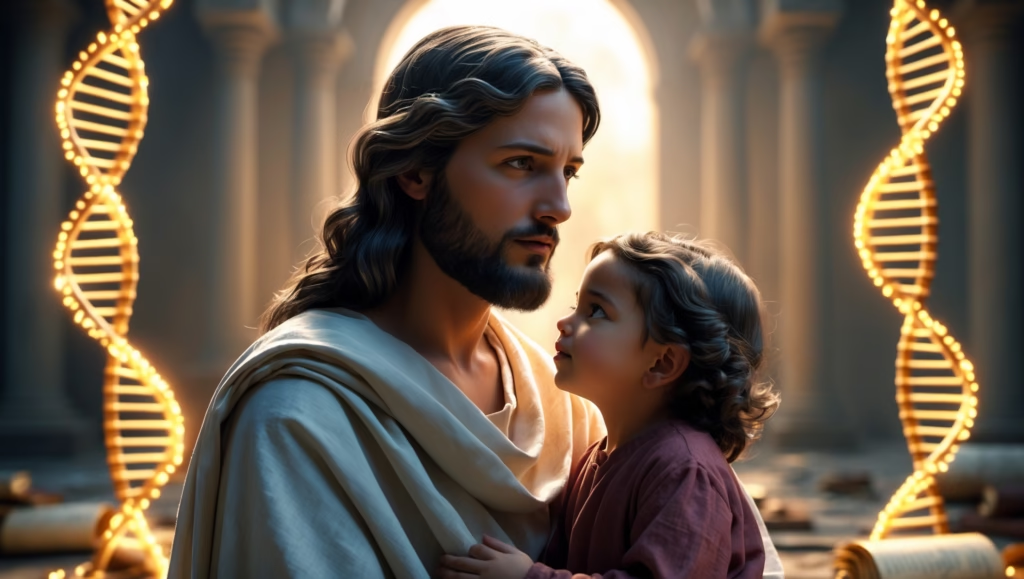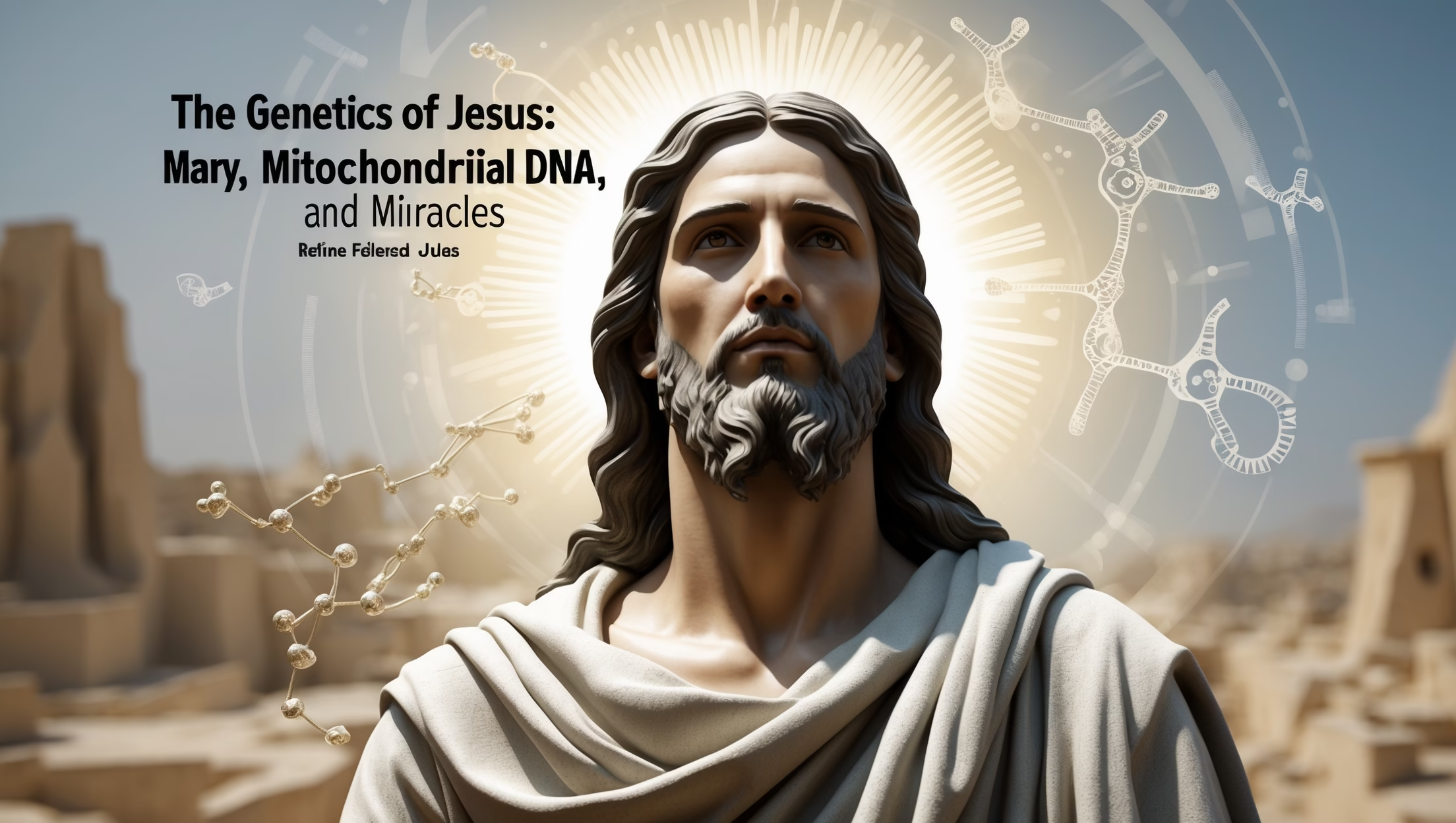Science Meets Incarnation
The life of Jesus is traditionally understood through faith, theology, and scripture. Yet modern genetics offers an intriguing lens through which to explore the biological dimensions of the Messiah. While the divine nature of Christ remains a matter of belief, scientific inquiry into human reproduction, DNA, and ancestry provides insights into the plausibility and implications of His birth, lineage, and physical heritage. Understanding the genetics of Jesus intersects biology, history, and theology, highlighting both human and divine dimensions.

Virgin Birth Possibilities: Parthenogenesis in Humans
One of the most profound claims about Jesus’ birth is His virgin conception (Matthew 1:18–25; Luke 1:26–38). While unique in theological terms, biology provides some points of discussion:
- Parthenogenesis: This form of asexual reproduction occurs naturally in some animals, such as certain reptiles and fish. In humans, spontaneous parthenogenesis is extraordinarily rare and typically non-viable, but it raises questions about how a genetic mechanism could theoretically bypass paternal DNA contribution.
- Stem Cell Research: In 2023, Harvard stem cell studies explored synthetic parthenogenesis, demonstrating that human egg cells can be induced to divide and form viable cell lines without fertilization. While experimental and ethical considerations abound, such research provides a biological framework for imagining the virgin birth as at least conceivable in theoretical terms.
- Mitochondrial DNA Implications: Since mitochondrial DNA is inherited maternally, a virgin birth scenario would preserve Mary’s mtDNA entirely in Jesus. This has implications for tracing maternal lineage and understanding how inherited traits may have manifested.
These considerations do not diminish the miraculous nature of the event for believers but show that modern genetics can frame questions in scientifically coherent ways.
Shroud DNA Analysis: Tracing Ancestry
The Shroud of Turin, long associated with Jesus, offers a tantalizing, though controversial, window into His potential genetic background:
- DNA Extraction: Multiple studies have attempted to extract genetic material from fibers on the Shroud. Findings suggest Middle Eastern haplogroups consistent with first-century Galilean populations, reflecting the historical and geographic plausibility of Jesus’ ancestry.
- Chromosomal Observations: Some samples indicate minor anomalies in sex chromosomes, sparking debate about whether these reflect contamination, degradation, or unknown biological phenomena. While inconclusive, such results underscore the complexity of studying ancient relics.
- Ethical Concerns: Extracting and testing relic DNA raises theological and ethical debates. Critics argue that such studies may violate the sacred status of artifacts, while proponents see opportunities to bridge faith and science.
Shroud DNA studies do not provide definitive proof of divine intervention but offer a unique intersection of historical, scientific, and religious inquiry.
Theological Boundaries: Faith and Biology
Scientific inquiry into Jesus’ genetics raises delicate theological questions:
- Docetism and Humanity: Early church debates, particularly around docetism, questioned whether Jesus was fully human. Genetics underscores His biological reality while maintaining theological reflection on His divine nature.
- Perpetual Virginity: Catholic doctrine emphasizes Mary’s perpetual virginity. Understanding mitochondrial inheritance reinforces the idea of maternal lineage continuity, connecting faith-based claims with biologically observable facts.
- Miracles and Science: Investigating Jesus’ genetics does not replace faith in miracles but contextualizes the incarnation within the framework of human biology, prompting deeper reflection on how the divine intersects with the natural world.
By respecting these boundaries, science can complement theology rather than contradict it.
Ethical Issues in Genetic Research
Studying Jesus’ genetics intersects with modern bioethics and cultural sensitivities:
- Relic DNA Testing: Testing DNA from sacred objects can provoke controversy, raising questions about consent, sanctity, and the purpose of research.
- Cloning Fears: Advances in reproductive technologies have prompted speculative concerns about cloning “the Messiah,” blending science fiction with ethical reflection. While purely hypothetical, these debates highlight societal unease with manipulating human genetic material.
- Public Communication: Responsible interpretation is crucial. Scientific data should be framed as exploratory and historical, not as evidence to challenge or replace religious belief.
Ethics, therefore, is central when bridging the scientific study of genetics and religious tradition.
Modern Implications: Genetics, Faith, and Culture
Exploring Jesus’ genetics offers broader applications:
- Educational Insights: Using genetics as a lens helps students understand the intersection of faith, history, and science. Biology and theology can coexist as complementary fields.
- Interdisciplinary Research: Combining archaeology, genomics, and textual studies provides nuanced understanding of first-century Palestine and the lived reality of Jesus’ family.
- Cultural Conversations: Discussions of maternal lineage, ancestry, and genetic inheritance illuminate how religious narratives intersect with identity, heritage, and communal memory.
By connecting molecular biology with sacred tradition, believers and scholars alike gain new perspectives on familiar narratives.
Key Insight: Reconciling Science and Faith
The genetics of Jesus encourages a holistic approach to understanding the incarnation. Scientific analysis—from parthenogenesis research to mitochondrial DNA studies—offers plausible frameworks without diminishing the spiritual significance of the Messiah. While biology explains potential mechanisms, faith interprets their divine purpose.
Ultimately, exploring Jesus’ genetic dimension demonstrates that science and religion can engage in constructive dialogue. Far from reducing the mystery, genetic insights enrich our appreciation of the interplay between humanity, divinity, and the material world.









